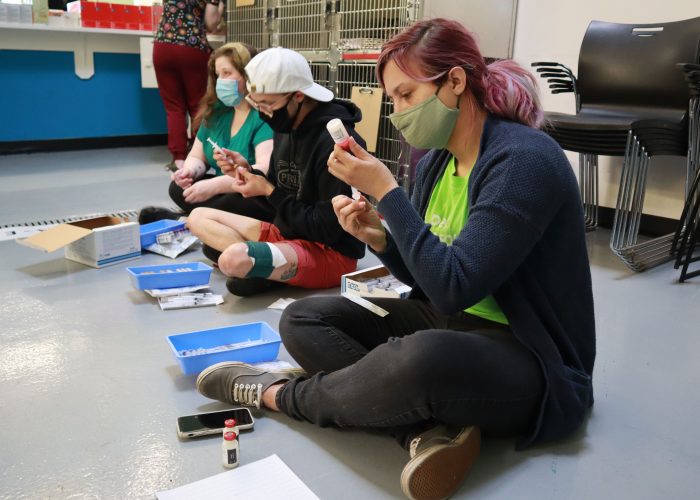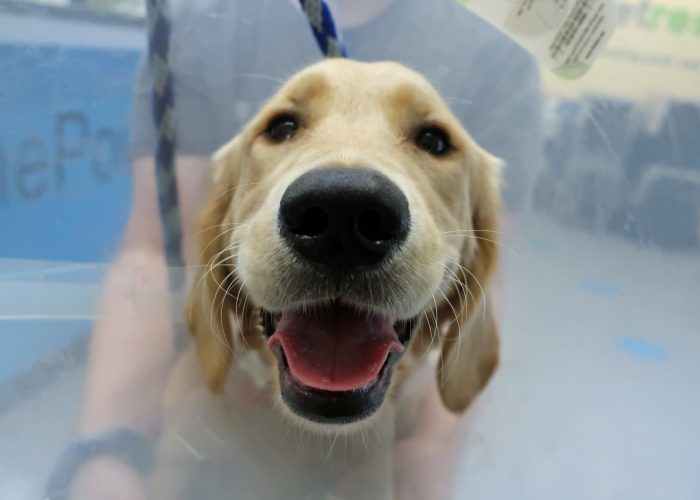 Happy National Spay/Neuter Awareness Month! As an organization with the phrase “Spay and Neuter” in our name, we’re already pretty aware of it, but maybe you’re not. Maybe you have questions about what the surgeries are, how they work, and what it means for your pet. So how about we make you aware :)
Happy National Spay/Neuter Awareness Month! As an organization with the phrase “Spay and Neuter” in our name, we’re already pretty aware of it, but maybe you’re not. Maybe you have questions about what the surgeries are, how they work, and what it means for your pet. So how about we make you aware :)
The Basics
A neuter is the surgery for male animals, and a spay is for female animals. Here’s an overview of both. Some of the small details (sutures, the green line tattoo) will be different at different clinics. This is how we do it.
Neutering is called a lot of different things: sterilization, “fixing,” “altering,” desexing, castration. The medical term is orchiectomy. This is how the surgery works:
- The pet is given an amount of general anesthesia determined by its weight.
- Once the pet is anesthetized, an incision is made at the front (relative to the pet) of the scrotum.
- The testicles are removed and the blood supply and vas deferens (the cord that carries sperm) are tied off.
- The incision is closed using absorbable sutures (so you don’t have to come back in to get them taken out), and a small, green line is “tattooed” on the pet’s belly to indicate they’ve been fixed, in case they escape and are found by someone else.
Spaying is usually called “fixing”. The medical term is ovariohysterectomy. It works like this:
- Just like a neuter, the pet is put under anesthetic.
- A small incision is made on the pet’s belly, and the reproductive system (ovaries, fallopian tubes, and uterus) is removed.
- The incision site is stitched up with absorbable sutures, and the pet is given a small, green line “tattoo” to indicate they’ve been fixed.
The Benefits
What are the benefits?
- Health:
- Reduced risk of mammary gland tumors (breast cancer), as well as ovarian and uterine cancer, especially if they’re fixed before their first heat cycle.
- Risk of testicular cancer in males is eliminated.
- Studies show that overall, pets who are fixed live longer, healthier lives.
- Behavior:
- Neutered males are generally less aggressive.
- Unless this has become an ingrained behavior, they’re much less likely to spray or mark territory.
- Have you ever seen a pet in heat? Don’t Google it. Heck, don’t even Bing it. If you have a female in heat, males will come from miles away. 85% of animals killed by vehicles are unaltered. The desire to mate overrides a lot of normal common sense behaviors (just like humans!), so pets in heat aren’t always careful and end up dead because of something that could have easily be prevented.
- Spayed females are generally less anxious.
Some Questions
Does it hurt them?
Your pet feels nothing while under anesthesia. At our clinic, all surgery packages come with pain medication to ease any immediate discomfort.
When should I get it done?
We will fix pets as young as 12 weeks old (as long as they weigh 3 pounds or more). For female pets, we recommend getting them fixed before their first heat cycle (which usually begins around 6 months of age). The reason for this is that spaying before their first heat cycle almost completely eliminates their lifelong risk of mammary tumors (breast cancer). Mammary tumors are malignant (cancerous) 50% of the time in dogs, and 90% of the time in cats, so it just makes sense to get it done early to reduce that risk.
“I Dunno; I’m Still Not Sure…”
Alright, then. How about this:
Vets, rescue organizations, and shelters all deal with different problems, but they all come from the same place:
Pet homelessness is the biggest challenge facing animal welfare. As people who deal with this issue on a daily basis, let us give you some examples of the objections people have, and how they don’t really add up:
- “My dog/cat doesn’t go outside!” It doesn’t matter. All it takes is for them to get out once while they’re in heat and desperate to reproduce. And if they’re leaving because they’re in heat, or because they sense another animal in heat, chances are the owner is going to have a litter of puppies on their hands. And while they might be able to find homes for the 6 puppies, that’s 6 shelter pets that might have found a forever home that are still stuck behind bars. And if the people who take those puppies don’t get them fixed, the cycle starts all over again. If each of those 6 puppies has 6 puppies, that’s 36 new puppies that need a home. And dogs can have more than one litter a year. That’s a LOT of puppies, all of whom need a home. And vet care. And food. And cats can reproduce even faster…
- “Well, I just want to breed her once.” Our advice? Don’t. Let’s be 100% honest here: they don’t need our help. It can be tempting, especially if someone is struggling financially, to try to breed an animal and sell the puppies/kittens. It’s just not a great idea. The general idea is that if you’re doing it right and with the health of the pets in mind, you don’t ever profit from breeding. A reputable breeder gets all the vetting done on their litters, including spay/neuter. Someone looking to make a quick buck isn’t likely able to afford that, which leaves the pups/kitties open to disease and/or unwanted litters. That means we end up in the same situation: shelter pets get passed over in favor of cute puppies/kitties, and the people who take those babies may not get them fixed, leading to even more unwanted litters, and more pets that don’t have homes.
- “I don’t want my pet’s personality to change.” There’s no evidence to support this being the case. While it often makes them less aggressive/anxious, that’s because the desire to reproduce is no longer there. This doesn’t mean that they have no reason to live. Pets don’t have ideas about gender like humans do. Getting your dog neutered doesn’t make him “less of a man”; he’s not a man, he’s a dog. The drive to reproduce is there to help them sustain their species, but their species is in no danger. Meanwhile, dogs and cats have enjoyed many, many, many years as human companion animals. The bond between humans and their pets is well documented; getting your pet fixed does not change their love for you, and the emotional bond they have with you.


Very good article, Dave! I’ve linked people to it who question spaying and neutering. As always – love your humour! I do have one question though. Why are males tattooed? Is it not obvious they’ve been fixed?
Thanks! That’s a really great question, and it ties in to cryptorchidism. Because it’s possible for an unaltered male dog or cat’s testicles to have never descended out of the inguinal canal, if someone brought a recent rescue to their vet for the first time, the vet would be able to tell at a glance whether they had been fixed or whether they were a double cryptorchid. That comes in especially handy when a cat or dog presents with abdominal pain, since an undescended testicle makes a pet 10 times more likely to develop testicular cancer, and surgery scars can’t always be seen very well, or have faded over time.
There are also situations where the scrotum is removed during a surgery (though it’s not the norm), and in pets that are fixed really young, the scrotum never develops, so you can’t always tell what the heck’s going on down there. It doesn’t happen a lot, but occasionally folks bring in a rescue that they think is a female that needs to be fixed, only to find out that it’s a male who’s already fixed, but doesn’t have a tattoo :) It’s always an interesting experience to give somebody that news, let me tell ya.
I was not aware that neuter your dog can help to reduce the risk of testicular cancer. My husband and I are thinking about adopting a dog, and we are looking for advice. I will let him know about your recommendations to understand the benefits of spay and neuter our pet.